-
 Bitcoin
Bitcoin $119800
1.38% -
 Ethereum
Ethereum $3873
3.25% -
 XRP
XRP $3.247
1.85% -
 Tether USDt
Tether USDt $1.001
0.02% -
 BNB
BNB $840.4
5.94% -
 Solana
Solana $190.0
2.55% -
 USDC
USDC $1.000
0.03% -
 Dogecoin
Dogecoin $0.2433
2.69% -
 TRON
TRON $0.3197
-0.05% -
 Cardano
Cardano $0.8367
1.39% -
 Sui
Sui $4.327
3.11% -
 Hyperliquid
Hyperliquid $44.00
0.31% -
 Stellar
Stellar $0.4461
1.76% -
 Chainlink
Chainlink $19.25
4.61% -
 Hedera
Hedera $0.2941
3.90% -
 Bitcoin Cash
Bitcoin Cash $598.4
6.89% -
 Avalanche
Avalanche $26.19
4.67% -
 Litecoin
Litecoin $115.1
0.50% -
 Shiba Inu
Shiba Inu $0.00001427
1.55% -
 Toncoin
Toncoin $3.379
2.01% -
 UNUS SED LEO
UNUS SED LEO $8.966
-0.16% -
 Ethena USDe
Ethena USDe $1.001
0.02% -
 Uniswap
Uniswap $11.04
4.16% -
 Polkadot
Polkadot $4.239
2.00% -
 Monero
Monero $324.6
0.36% -
 Bitget Token
Bitget Token $4.672
2.46% -
 Pepe
Pepe $0.00001294
2.69% -
 Dai
Dai $0.0000
0.01% -
 Cronos
Cronos $0.1443
2.71% -
 Aave
Aave $302.9
1.98%
Does USDT support cross-border payments?
USDT facilitates cross-border payments by bypassing traditional banking, but speed and cost depend heavily on the exchange, blockchain congestion, and varying global regulations; anonymity is limited by KYC/AML requirements, and peg stability impacts reliability.
Feb 28, 2025 at 07:12 am
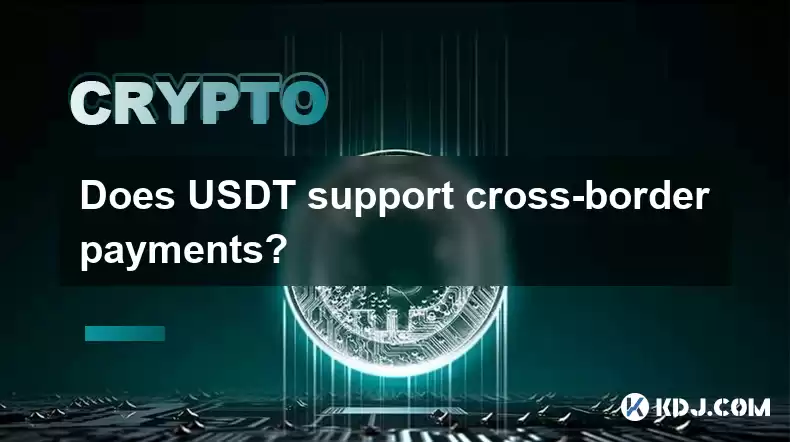
Does USDT Support Cross-Border Payments? A Deep Dive into Tether's Global Reach
Key Points:
- USDT's design facilitates cross-border transactions, bypassing traditional banking systems. However, its actual effectiveness depends heavily on the exchange and payment platforms involved.
- Regulatory hurdles and varying legal frameworks across jurisdictions significantly impact the feasibility and speed of USDT cross-border transfers.
- While USDT can theoretically reduce transaction fees compared to traditional methods, the actual cost can fluctuate depending on network congestion and exchange policies.
- The anonymity offered by USDT is limited; KYC/AML regulations require exchanges to verify user identities, potentially hindering truly anonymous cross-border payments.
- The stability of USDT's peg to the US dollar is a crucial factor affecting its reliability for cross-border payments. Fluctuations in the peg can lead to unpredictable losses or gains.
Understanding USDT's Cross-Border Payment Capabilities:
- The Decentralized Nature of the Blockchain: USDT, a stablecoin pegged to the US dollar, operates on various blockchains, primarily the Ethereum blockchain and others like Tron and EOS. This decentralized nature inherently supports cross-border payments by bypassing traditional banking infrastructures. Unlike traditional bank transfers that rely on correspondent banking relationships and complex intermediary processes, USDT transactions are recorded on a public, transparent ledger accessible globally. This, in theory, allows for faster and potentially cheaper transfers across international borders. However, the practical implementation isn't always straightforward. The speed and efficiency of the transaction depend heavily on the blockchain's processing speed and network congestion. A highly congested network can lead to significantly delayed transactions, negating the speed advantage. The use of different blockchains for USDT also creates complexity. Transfers between different blockchains may require bridging mechanisms, adding time and potential fees to the overall transaction. This complexity isn't immediately apparent to the average user, but it's a crucial factor in understanding the nuances of USDT's cross-border payment capabilities. Furthermore, the choice of exchange significantly influences the speed and cost. Different exchanges have different transaction fees, processing speeds, and relationships with various blockchain networks.
- Regulatory Landscape and Compliance: The regulatory environment surrounding cryptocurrencies varies drastically across different countries. Some jurisdictions have embraced cryptocurrencies and established clear regulatory frameworks, while others maintain a cautious or outright hostile stance. This difference significantly impacts the use of USDT for cross-border payments. Exchanges operating in countries with strict regulations are obliged to adhere to Know Your Customer (KYC) and Anti-Money Laundering (AML) guidelines. This means that users engaging in cross-border USDT transactions will need to provide identification and potentially undergo verification processes. These processes can add time and complexity to the transaction. In jurisdictions with stricter regulations, the use of USDT for cross-border payments may be severely restricted or even prohibited. The legal ambiguity surrounding cryptocurrencies in many regions further complicates the picture. Uncertainty around the legal status of USDT and its treatment under existing financial regulations makes it difficult for businesses and individuals to confidently utilize it for cross-border transactions. This legal uncertainty can also lead to unpredictable delays and potential risks for those involved.
- Transaction Costs and Fees: While often touted as a cheaper alternative to traditional banking systems, the actual cost of using USDT for cross-border payments isn't always predictable. The transaction fees on the underlying blockchain, like Ethereum gas fees, can fluctuate wildly depending on network congestion. High network congestion can lead to exponentially higher fees, making USDT transfers more expensive than traditional bank transfers. Furthermore, exchanges often add their own fees, which can vary significantly depending on the exchange and the specific transaction details. These exchange fees can be substantial, potentially offsetting any savings from reduced blockchain fees. Therefore, it’s crucial to carefully compare the total cost of a USDT transaction, including both blockchain fees and exchange fees, with the cost of traditional bank transfers before making a decision. Transparency in fee structures is not always guaranteed, making it challenging for users to accurately predict the final cost.
- Anonymity and Privacy Concerns: Despite the perception of anonymity often associated with cryptocurrencies, USDT transactions are not entirely private. KYC/AML regulations require exchanges to verify the identities of their users, limiting the anonymity achievable with USDT cross-border payments. While the transaction details might be recorded on a public blockchain, the identities of the parties involved are usually masked by the exchange's KYC procedures. However, this doesn't eliminate the risk of tracking or tracing transactions through various means. Law enforcement agencies can obtain information from exchanges regarding specific transactions, potentially undermining the privacy benefits of using USDT. The level of anonymity offered by USDT is significantly lower than what one might expect from a truly decentralized and anonymous cryptocurrency. This limitation is important to consider when using USDT for sensitive or private cross-border transactions.
- Peg Stability and Volatility: The stability of USDT's peg to the US dollar is a crucial factor affecting its reliability for cross-border payments. Any fluctuation in the peg can lead to unpredictable losses or gains for those involved in the transaction. While Tether maintains that USDT is fully backed by reserves, concerns about the transparency and composition of these reserves have periodically led to volatility in the peg. Significant deviations from the 1:1 peg can negatively impact the value of the transaction, particularly for large-scale cross-border payments. This volatility introduces an element of risk that is not present in traditional currency transfers. Users need to carefully monitor the peg's stability before engaging in significant USDT cross-border payments to mitigate potential losses due to peg fluctuations. The lack of complete transparency regarding Tether's reserves adds another layer of risk, making it crucial for users to understand the potential implications of any peg instability before utilizing USDT for cross-border transactions.
FAQs:
Q: Is using USDT for cross-border payments always cheaper than traditional methods?
A: Not necessarily. While USDT can potentially reduce transaction fees compared to traditional methods, the actual cost depends on several factors, including blockchain network congestion (leading to high gas fees), exchange fees, and potential conversion costs. In some cases, traditional banking methods might offer a more cost-effective solution.
Q: How secure are USDT cross-border payments?
A: The security of USDT cross-border payments depends on the security practices of the exchanges involved and the underlying blockchain network. While blockchain technology itself is generally secure, vulnerabilities can exist in exchanges' systems, making them susceptible to hacking or fraud. Users should carefully select reputable and secure exchanges to mitigate security risks.
Q: Are USDT cross-border payments completely anonymous?
A: No. KYC/AML regulations require exchanges to verify user identities, limiting the anonymity of USDT transactions. While transaction details may be public on the blockchain, the identities of the parties involved are usually masked by exchange KYC procedures. However, this does not guarantee complete anonymity.
Q: What happens if the USDT peg to the US dollar fluctuates significantly during a cross-border transaction?
A: Significant fluctuations in the USDT peg can lead to unpredictable gains or losses for those involved in the transaction. The value of the USDT received or sent might deviate from the expected value based on the US dollar equivalent at the time the transaction was initiated.
Q: Are there any legal restrictions on using USDT for cross-border payments?
A: Yes, the legal status of cryptocurrencies and their use for cross-border payments varies significantly across different jurisdictions. Some countries have embraced cryptocurrencies and established clear regulatory frameworks, while others have imposed restrictions or outright bans. Users must research the legal landscape in the relevant jurisdictions before engaging in USDT cross-border transactions.
Disclaimer:info@kdj.com
The information provided is not trading advice. kdj.com does not assume any responsibility for any investments made based on the information provided in this article. Cryptocurrencies are highly volatile and it is highly recommended that you invest with caution after thorough research!
If you believe that the content used on this website infringes your copyright, please contact us immediately (info@kdj.com) and we will delete it promptly.
- Tether Gold's Meteoric Rise: Market Cap and Soaring Gold Demand
- 2025-07-28 10:30:11
- Reddit, Crypto, and Altcoins: Navigating the Hype in 2025
- 2025-07-28 10:30:11
- Bitcoin, Altcoin, Volume Surge: Decoding the Crypto Market's Latest Moves
- 2025-07-28 10:50:20
- Bitcoin, Altcoins, and 2024 Targets: A NYC Perspective
- 2025-07-28 10:50:21
- Moo Deng Meme-Coin Mania: ROI or Just Hype?
- 2025-07-28 10:55:13
- Ethereum, Injective, and Tokenized Stock: A New Era in DeFi?
- 2025-07-28 11:10:12
Related knowledge
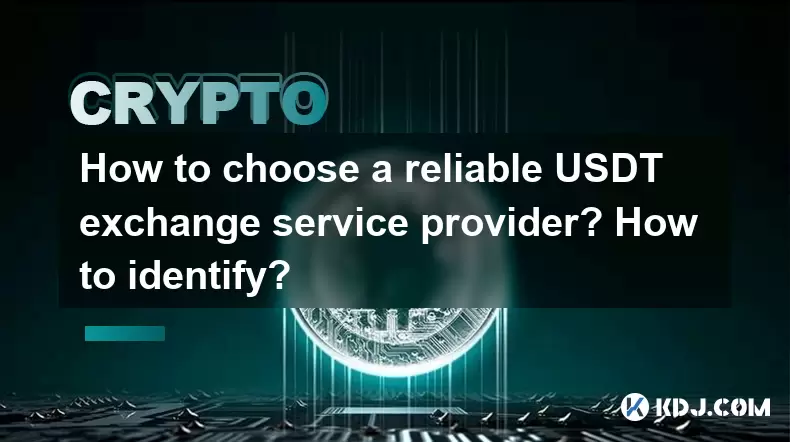
How to choose a reliable USDT exchange service provider? How to identify?
Jun 12,2025 at 03:15pm
Understanding the Role of USDT in Cryptocurrency TradingUSDT (Tether) is one of the most widely used stablecoins in the cryptocurrency market. It is d...
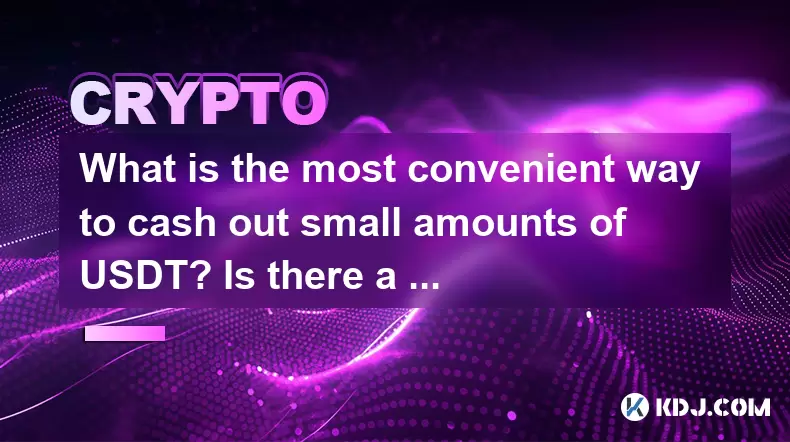
What is the most convenient way to cash out small amounts of USDT? Is there a shortcut?
Jun 11,2025 at 11:00pm
Understanding the Need to Cash Out Small USDT AmountsCashing out small amounts of USDT can be a challenge for many crypto users. Traditional methods o...
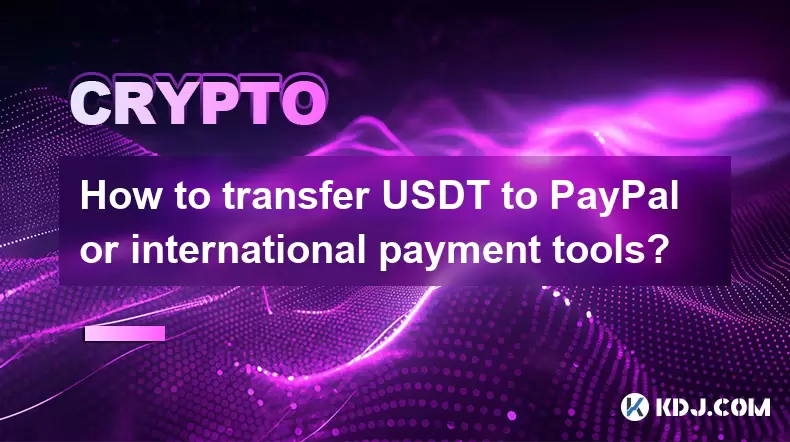
How to transfer USDT to PayPal or international payment tools?
Jun 15,2025 at 05:28am
Understanding the Basics of USDT and PayPal IntegrationUSDT (Tether) is a stablecoin pegged to the US dollar, offering blockchain-based value transfer...
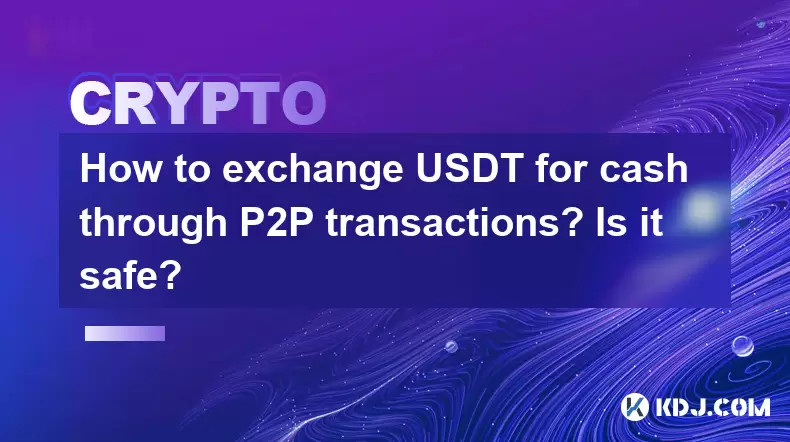
How to exchange USDT for cash through P2P transactions? Is it safe?
Jun 18,2025 at 07:56am
Understanding USDT and P2P TransactionsTether (USDT) is a stablecoin pegged to the value of the US dollar, making it a popular choice for users who wa...
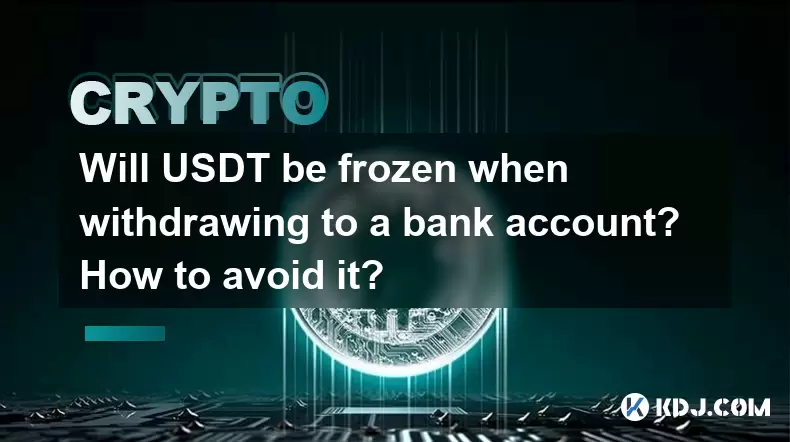
Will USDT be frozen when withdrawing to a bank account? How to avoid it?
Jun 15,2025 at 10:03am
Understanding USDT Withdrawals and Bank Account Freezing RisksWhen users decide to withdraw USDT (Tether) to a bank account, one of the most common co...
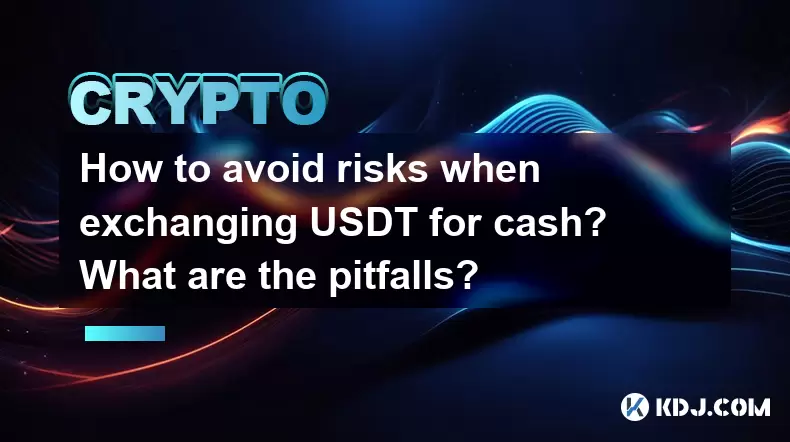
How to avoid risks when exchanging USDT for cash? What are the pitfalls?
Jun 11,2025 at 08:14pm
Understanding the Risks of Exchanging USDT for CashWhen exchanging USDT (Tether) for cash, users must be aware of the potential risks involved. As a s...

How to choose a reliable USDT exchange service provider? How to identify?
Jun 12,2025 at 03:15pm
Understanding the Role of USDT in Cryptocurrency TradingUSDT (Tether) is one of the most widely used stablecoins in the cryptocurrency market. It is d...

What is the most convenient way to cash out small amounts of USDT? Is there a shortcut?
Jun 11,2025 at 11:00pm
Understanding the Need to Cash Out Small USDT AmountsCashing out small amounts of USDT can be a challenge for many crypto users. Traditional methods o...

How to transfer USDT to PayPal or international payment tools?
Jun 15,2025 at 05:28am
Understanding the Basics of USDT and PayPal IntegrationUSDT (Tether) is a stablecoin pegged to the US dollar, offering blockchain-based value transfer...

How to exchange USDT for cash through P2P transactions? Is it safe?
Jun 18,2025 at 07:56am
Understanding USDT and P2P TransactionsTether (USDT) is a stablecoin pegged to the value of the US dollar, making it a popular choice for users who wa...

Will USDT be frozen when withdrawing to a bank account? How to avoid it?
Jun 15,2025 at 10:03am
Understanding USDT Withdrawals and Bank Account Freezing RisksWhen users decide to withdraw USDT (Tether) to a bank account, one of the most common co...

How to avoid risks when exchanging USDT for cash? What are the pitfalls?
Jun 11,2025 at 08:14pm
Understanding the Risks of Exchanging USDT for CashWhen exchanging USDT (Tether) for cash, users must be aware of the potential risks involved. As a s...
See all articles

























































































